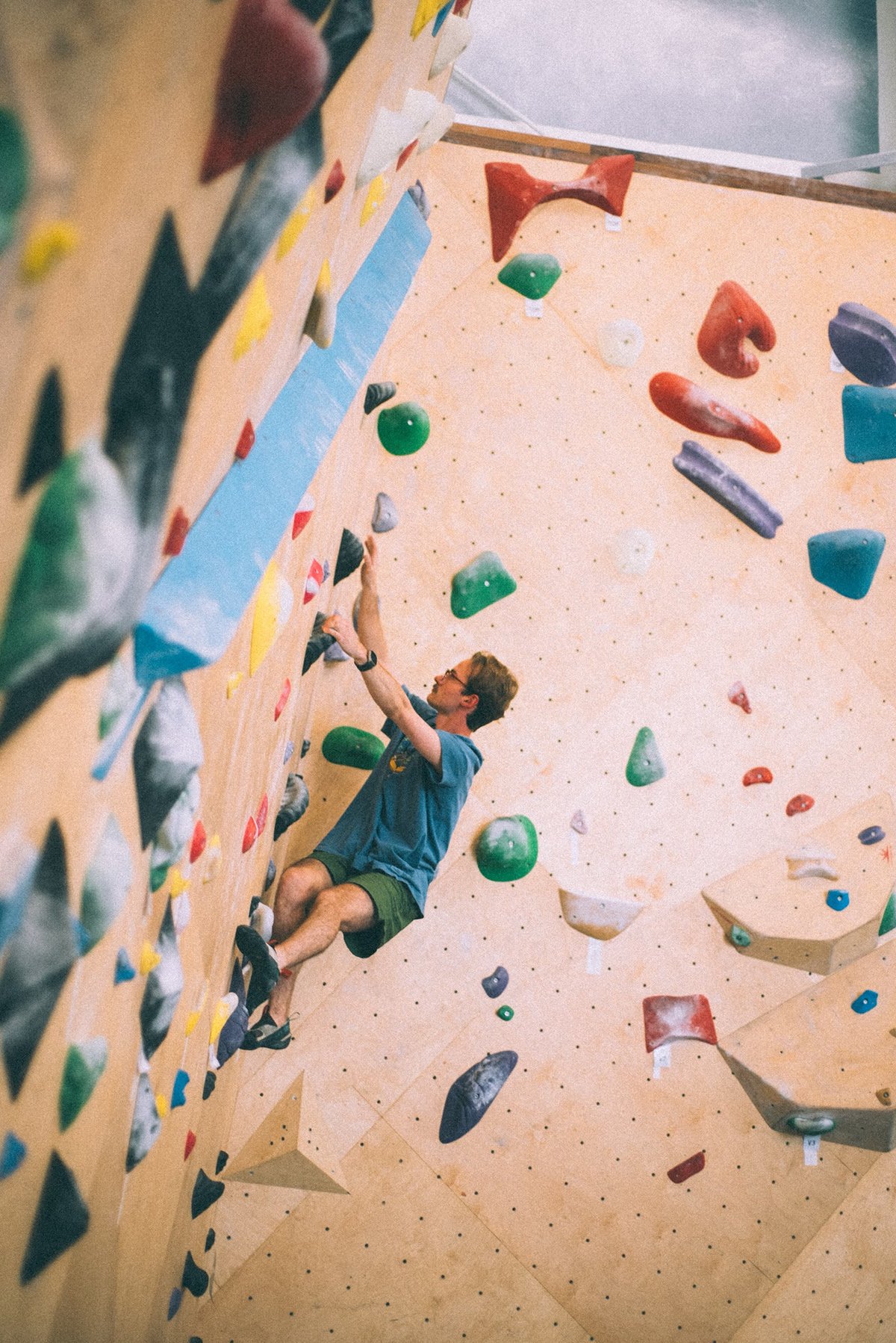Indoor vs. Outdoor Bouldering: What’s the Difference?
Bouldering is a raw, up-close-and-personal dance with gravity.
Bouldering climbs are usually under 20 feet high, and thick mats or crash pads provide protection from falls. It is about problem-solving, body tension, and often explosive power, all condensed into just a few critical moves.
Similarities Between Indoor and Outdoor Bouldering
The core principles remain the same regardless of setting: climbers face short sequences of moves that test strength, flexibility, and mental acuity. Whether pulling on plastic holds or weathered granite, it's all about deciphering movement, maintaining control, and fighting gravity one move at a time.
That said, the environment changes everything. Indoors, you're in a curated playground. Outdoors, you're on nature's terms. Each comes with its own challenges and rewards. One way to think of it is like comparing chess in a library to street chess in the rain. Still chess but with wildly different vibes.
The Indoor Bouldering Experience
Step into a gym, and you're stepping into predictability. The walls are dry, the lighting is perfect, and there's a cushy landing beneath every climb. Route setters create problems with specific goals in mind, whether it's balance-heavy slabs or dynamic dynos. Everything is measured, tested, and deliberately placed.
Plastic holds are consistent. They don't change with weather, erosion, or moss. Grips are color-coded, shapes are intentional, and resets happen regularly to keep things fresh. This control gives climbers the ability to project problems repeatedly without surprises. It's ideal for tracking progress and training specific skills.
Gyms tend to be bustling with climbers swapping beta, cheering each other on, and grabbing post-session burritos or beers. Casual camaraderie thrives in this shared space. Whether you're a first-timer or a seasoned crusher, there's usually someone nearby to offer encouragement or a spot.
The Raw Reality of Outdoor Bouldering
Outside, the climbing surface is as varied as it gets: sandstone, granite, limestone, and basalt, each with its own personality. Holds aren't shaped by human hands but by wind, water, and time. Grips are subtler and more complex. It's a different tactile language; learning to read it takes time.
Falling outdoors hits different. Crash pads can shift, and landings can be uneven. Every move carries more consequences, which demands a deeper level of commitment. There's no staff belayer watching, no padded floor stretching wall to wall. It's just you, your spotter, and your judgment.
Forget color-coded routes. There are no blue V4s in the wild. You have to read the rock: follow features, feel textures, spot chalk marks (then brush them). It's intuitive, organic, and often messy. Finding the line is part of the challenge, and that discovery makes each send feel earned.
The thing about outdoor climbing is that Mother Nature doesn't always cooperate. Rain slicks holds. Wind chills fingers. A warm day can make slopers feel like glass. Wildlife, loose rock, and approaching darkness add variables that don't exist indoors. You adapt, or you bail.
Equipment Differences Indoors vs. Outdoors
For the gym? Shoes, chalk bag, water bottle, maybe a brush. That's it. Outdoor days require more: multiple crash pads, guidebooks or apps, a decent brush kit, layers for shifting weather, snacks, and a first-aid kit—just in case.
Crash pads are your lifeline outdoors. Good ones are thick, durable, and sometimes as awkward as a futon to carry. Brushes keep holds grippy and clean. Guidebooks or apps like Mountain Project help you locate problems and understand beta.
Indoor holds can be rough on shoes due to gritty textures, but outdoor climbing eats rubber for breakfast. Granite edges and sandstone friction wears shoes faster, and the uneven terrain means more toe dragging, heel scumming, and foot slips. Rotating pairs becomes essential.
Indoors, gym staff keep an eye out. Outdoors, safety is on you and your crew. Spotters are crucial, not just for catching falls but also for guiding you toward the pad and preventing awkward landings. Communication, trust, and positioning make all the difference.
Grading Games: How Difficulty Is Measured
In North America, most gyms and outdoor areas use the V-scale (V0 to V17+). Europe often uses the Fontainebleau scale. Indoors, grading is relatively consistent across sets. Outdoors? Grades evolve, vary by region, and depend on the first ascentionist's opinion.
That V5 you cruise in the gym? Don't expect to match it outside. Real rock can be more technical, more subtle, and mentally taxing. Holds may be harder to find or use.
Grades are suggestions. A climb's difficulty can change with temperature, reach, style, and personal strengths. The real joy shouldn't be in chasing numbers, anyway. It's solving the problem in front of you, wherever it may be.


